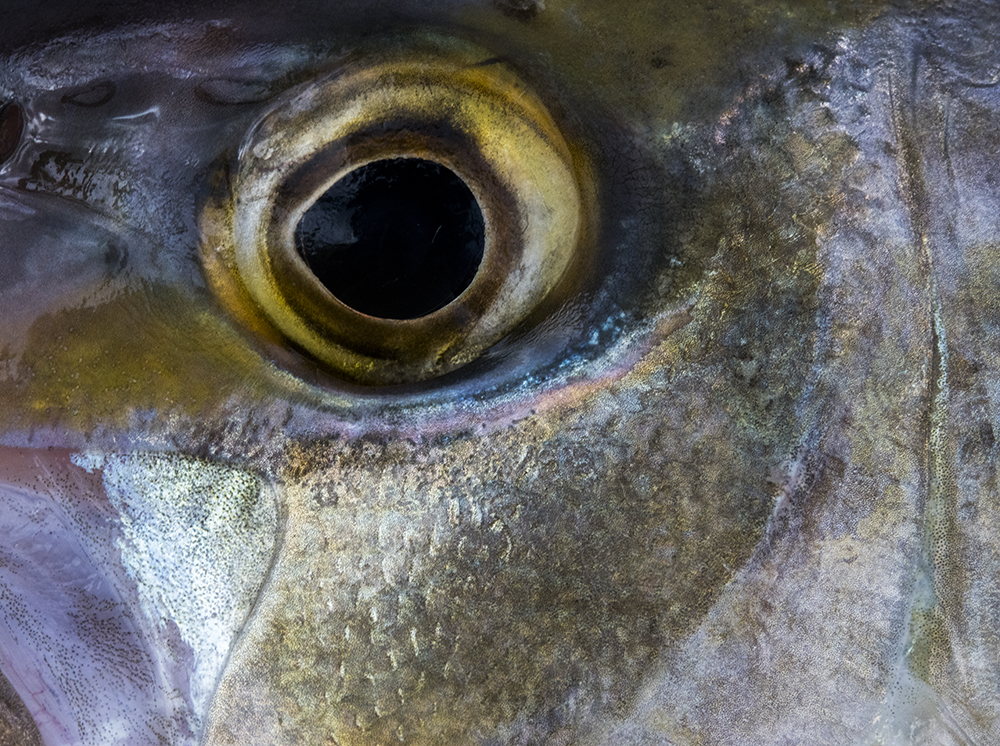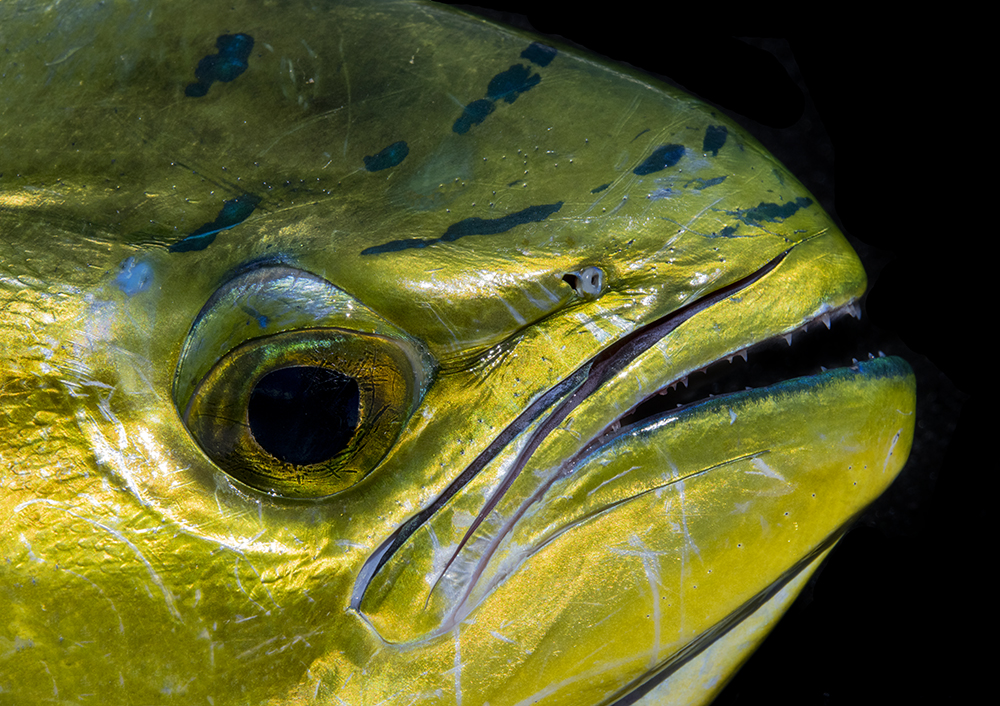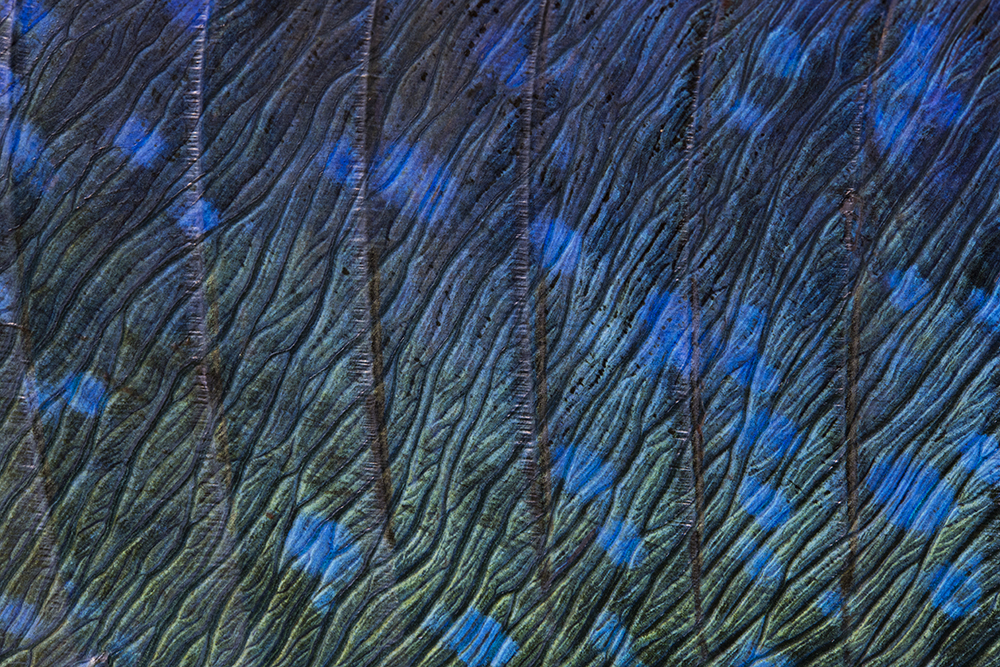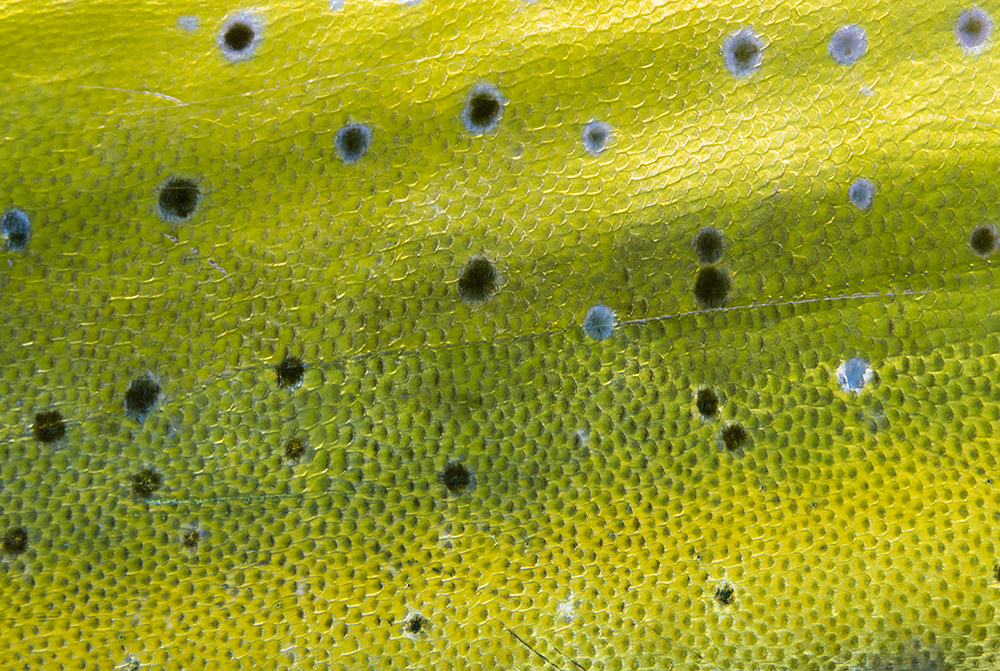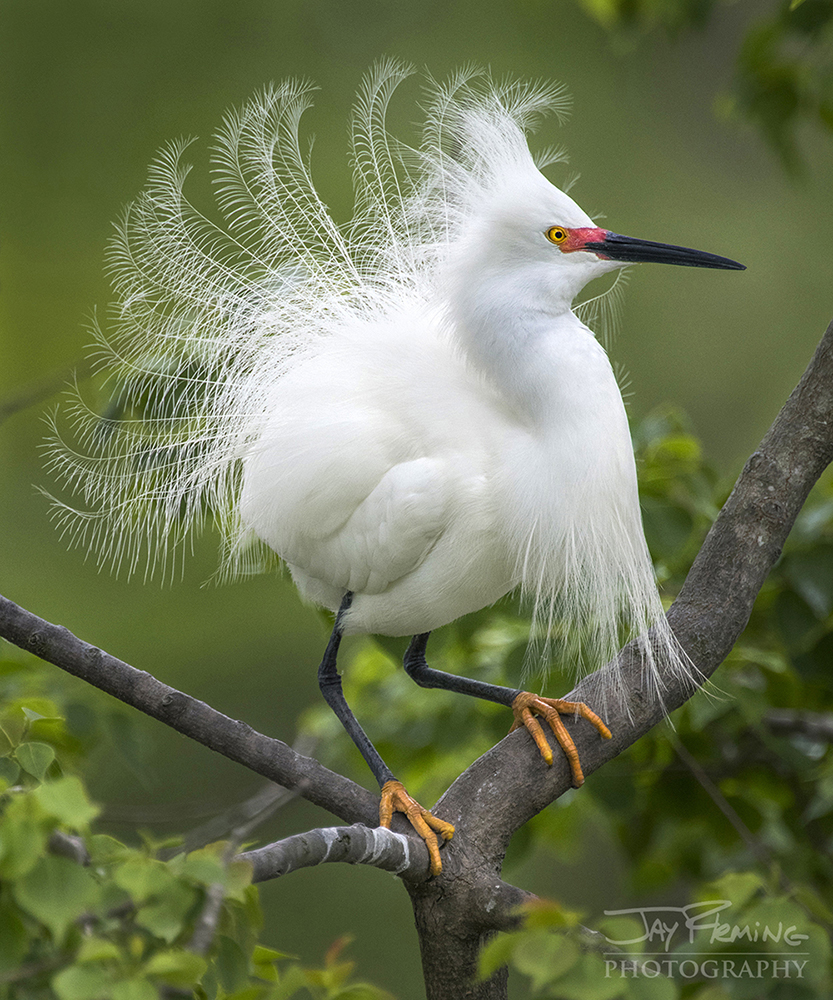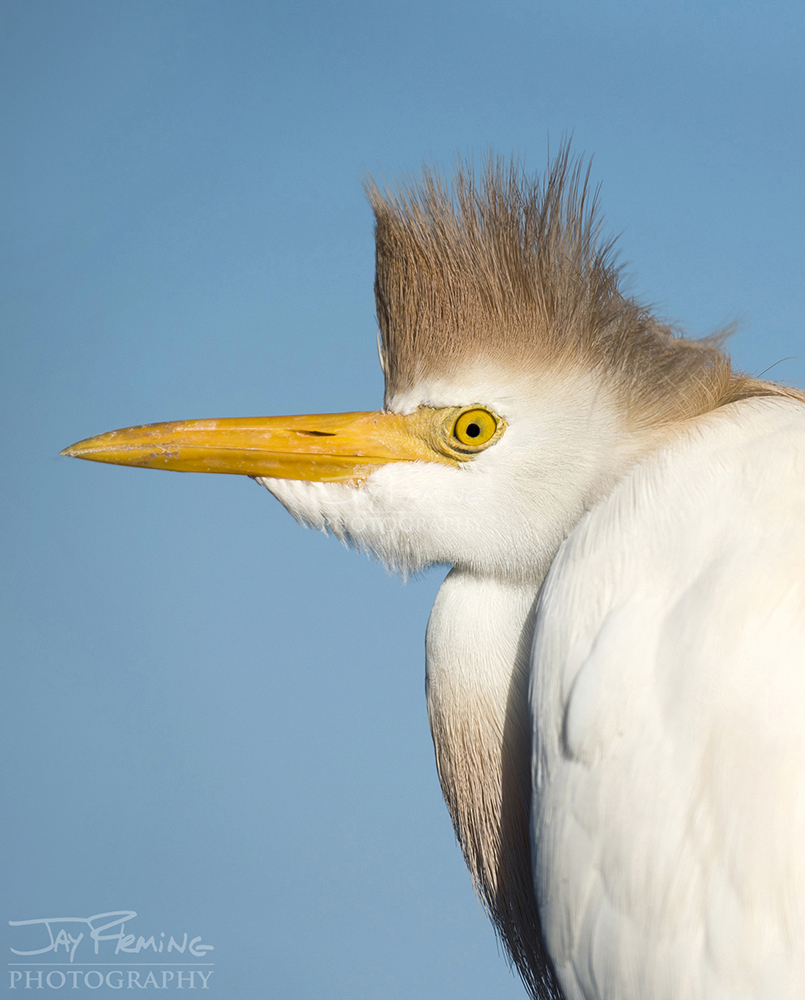Details of fish caught while on assignment during April 2018 in Louisiana and Florida.
Top (left to right) - Mayan Cichlid, Mahi-Mahi, Banded Rudderfish
Bottom - Mahi-Mahi
May 2018 Cover - Chesapeake Bay Magazine Cover
Dale Irwin prepares the jib on the Rebecca T. Ruark prior to the annual skipjack races in Tangier Sound out of Deal Island, Maryland.
Louisiana - April 2018
I spent five days on assignment in the Gulf of Mexico out of Dulac, Louisiana photographing fishermen targeting Yellowfin Tuna. Two days prior to the shoot, I had time to explore the areas in the 'bayou' south of Houma. I drove around Dulac and Cocodrie looking for scenes to photograph. Both of these towns are just barely above sea level and have many indicators of a prosperous shrimping industry. During the 1970's and 1980's, the Shrimp industry in southern Louisiana was at its peak - but now signs of decline are evident with the derelict workboats and abandoned packing houses. Contributing factors to the decline in the industry include, but are not limited to: lower priced shrimp imported from farms in Southeast Asia flooding the domestic markets, fisheries regulations and increased cost of operating. Despite pressures that have hurt the industry, harvesting seafood still remains a big economic driver in this area. Oysters, Red Snapper and Yellowfin Tuna represent the largest landings in Dulac aside from Brown and White Shrimp.
Shrimp trawlers lined up at a packing house in Dulac, Louisiana waiting for the start of the inshore Brown and White Shrimp season to open on May 1st.
An abandoned shrimp packing house in Dulac. The shrimp industry peaked in the 1970's and 1980's - supporting dozens of processing facilities and thousands of boats in Southern Louisiana. Shrimp imported from overseas, increased cost of operating and pressures from regulation have caused the industry to decline in the last three decades.
A derelict refrigerated truck at an abandoned Shrimp processing facility is reflective of the once thriving Shrimp industry Dulac.
The Tuna long-lining fleet out of Dulac is run by Vietnamese captains. There are approximately 30 long-lining boats left in the Gulf of Mexico - in Dulac and Panama City Beach.
Lee and Jake - an offshore Shrimp Trawler, leaving Dulac is dwarfed by the offshore supply ship Dean Edward Taylor. This ship brings crew and other supplies to the offshore oil rigs in the Gulf of Mexico.
A floating oil rig nearly 150 miles offshore in the Gulf of Mexico.
After getting off the boat, I drove northwest towards New Orleans - stopping to photograph two plantations near Vacherie, Louisiana. I stopped at the well known Oak Alley Plantation to photograph the 1800’s built home through the tunnel of live oaks. The former sugar plantation lies on the shores of the Mississippi River about an hour from New Orleans. I also stopped to photograph the Evergreen Plantation. After shooting for a few hours, I made plans to meet up with Louisiana wildlife photographer, Charles Bush near Lafayette. Charles pointed me in the right direction to photograph nesting Roseate Spoonbills near an area known as Jefferson Island. The rice fields in this region provide ideal feeding habitat for wading birds and the birds nest in nearby bodies of water in large groups known as rookeries. The Roseate Spoonbills nesting in the Jefferson Island area had built nests on small islands that were isolated in the middle of ponds. Predators like raccoons or foxes have difficulty accessing the islands to feed on the eggs and juvenile birds - especially with large Alligators lurking nearby. At the rookery, we had ideal light - a high cloud cover that diffused the direct sunlight. We spent three hours shooting the birds building their nests and putting on their mating displays.
I stayed in Breaux Bridge, a small town just east of Lafayette. Breaux Bridge is about 10 miles from Lake Martin which is home to another large wading bird Rookery. Lake Martin is also known for its beautiful Cypress trees that are covered in Spanish Moss. I shot at the lake during the best light of the day, at sunrise and sunset, and spent the rest of the day packing my gear to prepare for the second leg of my assignment. I left Louisiana the next morning for Pompano Beach, Florida to photograph a commercial fishing trip in the Straits of Florida for Swordfish.
Oak Alley Plantation near Vacherie, Louisiana
Rice Fields near Breaux Bridge, Louisiana.
Bald Cypress trees at Lake Martin, Louisiana.
Roseate Spoonbills building nests at the rookery near Jefferson Island.
Snowy Egret (left) and Cattle Egret (right).
An Alligator lurking below the Roseate Spoonbill Rookery near Jefferson Island, Louisiana.
Red Eared Slider. Lake Martin, Louisiana
Thelypteris noveboracensis, the New York fern, along the shores of Lake Martin, Louisiana.
Anglers Journal - My Boat My Life - Spring 2018
My first boat was a kayak, my second boat was a 15-foot Gheenoe, and my third boat was an 18-foot Privateer bay boat. All three had two things in common: They were great for the shallow waters of Chesapeake Bay, and they were limited and potentially dangerous in the rough conditions that happen frequently on my home waters.
All too quickly, I learned how small my Privateer was when crossing Tangier Sound from Smith Island to Crisfield, Maryland. The sound is notoriously rough, especially with a strong northeast wind and a flood tide. I was routinely making the 10-mile trip for fishing and photography, and while my bay boat was perfect for shallow water — the brand was the go-to center console in the 1980s for watermen working the creeks and rivers along the Chesapeake’s Eastern Shore — I knew I needed a bigger version to handle tougher conditions.
I found my perfect boat in the least likely place: an art gallery in Annapolis, where I was showing my work from Smith Island. Boatbuilder Kevin Marshall came to see a large print of my photograph showing his father crab-potting. I asked if he knew of anything in the 22- to 25-foot range. He had a 22-foot Privateer Roamer built in 1983 in Belhaven, North Carolina. The boat had been used and abused by a waterman known for being hard on his gear. I had seen the work that Kevin did on Parkers, C-Hawks and other Privateers, so the condition of the hull didn’t deter me. The fact that we had a blank canvas to work with was exciting.
Nearly six months after initiating the conversation with Kevin about a boat, I was making my first run to start breaking in the outboard. Weather was no longer an issue; I was ready for almost anything the Chesapeake could offer.
The final step was picking a name for her. I call her the Carla Marie, after one of the most influential people in my life: my mother.



